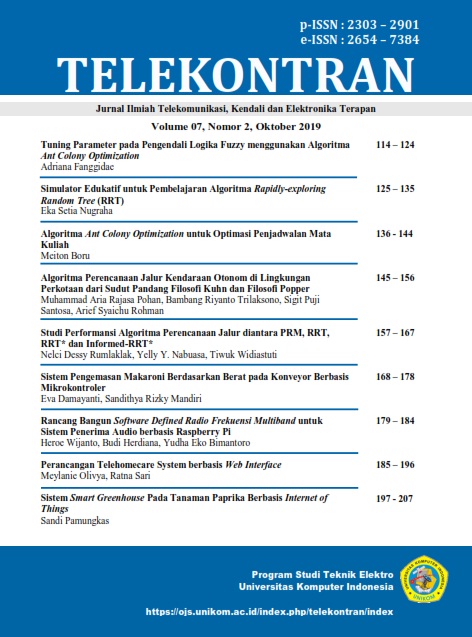Path Planning Algorithm for Autonomous Urban Vehicles from the Viewpoint of Kuhn’s Philosophy and Popper’s Philosophy
Main Article Content
Abstract
Autonomous vehicles can be useful to improve safety, efficiency, accessibility and convenience of transportation. One important task that must be carried out by autonomous vehicles is to do path planning through a dynamic urban environment where there are other vehicles and pedestrians. According to Kuhn's philosophy, a science has its own life cycle. The science life cycle consists of the birth phase, the proof phase and the acceptance phase of the new science into what is called normal science. Likewise with the scientific development of path planning algorithms, path planning algorithms for autonomous vehicles are still being researched and developed by various researchers. New studies continue to be conducted in an effort to find pathway planning techniques that can be generally accepted, so that the algorithm will become a normal science. According to Popper's philosophy, each proposed algorithm must be tested using the principle of falsification to determine whether the proposed technique can eventually become a normal science or not. So this paper aims to provide an overview of the scientific cycle of planning autonomous vehicle lanes. This paper also aims to compare the latest research on path planning algorithms for autonomous vehicles in urban areas. In comparing these algorithms, the principle of Popper's falsification will be used. The comparison results presented in this paper will help gain insight into the advantages and disadvantages of each algorithm, and will also help to choose the algorithm used in the design of autonomous vehicle systems.
Keywords Â: Autonomous vehicles, path planning algorithms, urban environment, Khun’s scientific cycles, Popper’s falsification
Downloads
Article Details
Section

This work is licensed under a Creative Commons Attribution-ShareAlike 4.0 International license.
